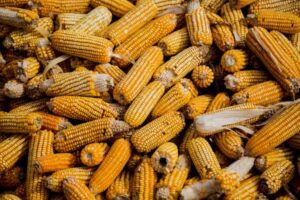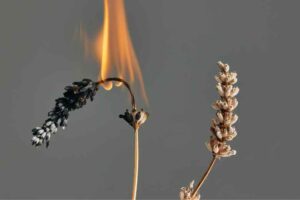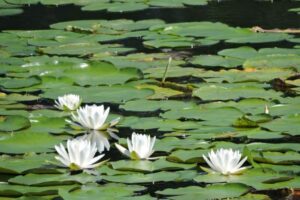
Eating your dahlia leaves can be a frustrating problem for gardeners. Dahlias are a beautiful and popular garden flower, but unfortunately, they can be vulnerable to pests and diseases.
There are a variety of pests and diseases that can cause damage to your dahlia leaves, including slugs, snails, aphids, thrips, caterpillars, and fungal diseases.
However, identify the cause of the damage of your dahlia leaves can help you to take steps to resolve the issue and protect the plants.
Lets getting into deep analysis!
Identifying the Culprit
It can be frustrating to find something munching on your precious dahlia leaves. Here’s a step-by-step guide to identifying the culprit and managing the problem:
1. Inspecting the Damage:
- Holes in Leaves: Usually the work of slugs, snails, or caterpillars.
- Irregular Edges or Chewing on the Margins: Likely earwigs, beetles, or aphids.
- White, Powdery Spots: Fungal disease, not necessarily a pest.
2. Investigate the Scene:
- Look Underneath the Leaves: Check the undersides of leaves and the soil for slugs, snails, and aphids.
- Time of Day: Slugs and snails are more active at night or early morning, while aphids and other insects may be active during the day.
3. Identify the Culprit:
Here are some common pests that might be the culprits:
- Slugs and Snails: These will leave a slime trail. Look for them in damp, shaded areas.
- Aphids: Small, often green insects that might be on the underside of leaves.
- Caterpillars: These may be found actively eating the leaves.
- Earwigs: Look for them hiding in moist, sheltered areas.
- Japanese Beetles: Metallic green and brown beetles that eat a variety of plants, including dahlias.
4. Implement Control Measures:
- Slugs and Snails: Use traps filled with beer, handpick them, or use a natural, pet-safe slug bait.
- Aphids: Spray with water or use insecticidal soap.
- Caterpillars: Handpick them or use a product containing Bacillus thuringiensis (Bt), a natural insecticide.
- Earwigs: Trap them using damp newspaper or cardboard.
- Japanese Beetles: Pick them off by hand or use a neem oil spray.
5. Ongoing Maintenance:
- Keep the area around the dahlias clean and free of debris to discourage pests.
- Monitor the plants regularly for signs of infestation.
- If you continue to have trouble identifying the pest, consider taking a sample or photo to a local garden center or extension office for expert identification.
By carefully examining the damage and following the above steps, you should be able to identify the problem and take appropriate action to keep your dahlias healthy and beautiful.
Common Insect Pests
Common insect pests are pesky little creatures that can cause damage to plants, food, fabrics, and even your home. They can range from the small and harmless to the large and destructive. Have a look.
- Aphids – Small soft-bodied insects that suck sap from leaves and stems. They cause leaves to curl and distort. Look for clusters or colonies of aphids in various colors.
- Caterpillars – The larval stage of moths and butterflies. Look for feeding damage or holes in leaves. Check under leaves for various types of caterpillars.
- Japanese Beetles – Metallic green beetles that feed on foliage in groups. They skeletonize leaves, leaving a lace-like appearance.
- Spider Mites – Tiny spider-like insects that feed on undersides of leaves causing a stippling or speckled appearance. Leaves may turn yellow or brown.
- Hornworms – Large green or brown caterpillars with white stripes and a horn-like tail. They can eat entire leaves quickly.
- Cutworms – Dull colored caterpillars that feed at night. May cut off entire seedlings at soil line. Look for damage low on plant.
- Slugs and Snails – Cause ragged feeding holes or slime trails on leaves after dark. Tend to feed during humid conditions.
Carefully inspect damaged leaves for the pests themselves or signs like frass (insect poop) to help identify the culprit and determine the best control options. Take action early before extensive defoliation occurs.
Common Disease Problems
Here are some common disease problems that could be affecting your dahlia leaves:
- Powdery Mildew – A white, powder-like fungal growth appears on leaves, stems, and flowers. Leaves may yellow and drop prematurely.
- Leaf Spots – Various fungal diseases cause spots or lesions on leaves. Common types include early blight ( target-like spots) and anthracnose (irregular brown spots).
- Rust – Causes yellow, orange, or brown pustules or raised spots on leaves, stems, and buds. Leaves may yellow, curl, and drop early.
- Verticillium Wilt – Lower leaves are yellow, wilt, and droop on one side of the stem. Stems may have brown streaks. The whole plant wilts quickly and dies.
- Root Rot – Caused by various soil fungi. Leaves initially wilt on hot afternoons despite adequate watering. Eventually plants yellow and die. Stems rot at the soil line.
- Botrytis Blight – Gray fungal growth occurs on flowers, buds, or foliage during cool, wet conditions. Stems may rot.
- Viral Infections – May cause mosaic or mottling of leaves. Leaves may be dwarfed, or distorted. Further spread by aphids or grafting.
You must examine leaves for signs of fungal growth or discoloration patterns to help narrow down the potential disease. Consider cultural and environmental triggers as well as treatment options. Contact your local agricultural extension for confirmation if needed.
Preventing pests and diseases is often more efficient than treating them once they’ve arrived. Here are some prevention tips to protect your dahlias:
1. Choose the Right Location:
- Sunlight: Dahlias thrive in full sun. Plant them in a location that gets at least 6 to 8 hours of sunlight to promote healthy growth.
- Good Drainage: Make sure the soil drains well to prevent waterlogging, which can encourage slug and snail activity.
2. Practice Good Watering Habits:
- Water Early: Watering early in the day allows the plants to dry, reducing the risk of fungal diseases.
- Water at the Base: Avoid wetting the foliage as this can encourage disease.
3. Maintain Healthy Soil:
- Fertilize Appropriately: Over-fertilizing can lead to soft growth, making plants more susceptible to aphids and other pests.
- Use Compost: Organic matter improves soil health, supporting stronger plants.
4. Monitor and Maintain Plants:
- Regular Inspection: Check your plants frequently for signs of pests or disease.
- Prune Damaged Parts: Remove damaged or diseased leaves to prevent the problem from spreading.
5. Use Physical Barriers:
- Mulch: A layer of mulch can deter some pests, like slugs and snails, and also helps maintain soil moisture and health.
- Row Covers: These can be used to protect the plants from flying insects like beetles.
6. Implement Crop Rotation:
- If possible, don’t plant dahlias in the same spot year after year. This can help break the life cycle of soil-borne pests and diseases.
7. Encourage Beneficial Insects:
- Plant flowers that attract predators like ladybugs and lacewings, which can keep aphid populations in check.
8. Keep the Garden Clean:
- Remove plant debris and weeds, as they can harbor pests and diseases.
9. Buy Healthy Plants:
- Make sure to buy disease-free tubers or plants. Inspect them for signs of damage or disease before planting.
10. Avoid Overcrowding:
- Proper spacing ensures good air circulation, reducing the likelihood of fungal diseases.
11. Use Companion Plants:
- Some plants, like marigolds, are said to deter certain pests. Consider planting them near your dahlias.
By following these preventive measures, you can create an environment where your dahlias are less likely to fall victim to common pests and diseases. Healthy plants are often the best defense against problems, so focus on proper care and early intervention if you notice anything amiss.
Treatment Options
If prevention methods fail and you find yourself dealing with pests or diseases on your dahlias, here are some treatment options you can consider:
For Insect Pests:
- Handpicking: Remove slugs, snails, caterpillars, or beetles by hand and dispose of them.
- Insecticidal Soaps: Effective against soft-bodied insects like aphids and spider mites. Be sure to follow the instructions on the packaging.
- Neem Oil: A natural insecticide that can deter a variety of pests including Japanese beetles and aphids.
- Biological Controls: Introduce predatory insects like ladybugs or parasitic wasps, which are natural enemies of many garden pests.
- Traps: Use beer traps for slugs and snails, or pheromone traps for specific insect pests.
For Fungal Diseases:
- Fungicides: Commercial fungicides can be used to treat various fungal diseases. Follow the manufacturer’s guidelines for application.
- Pruning: Remove affected leaves and dispose of them properly (not in the compost pile) to prevent the spread of disease.
- Baking Soda Spray: A mixture of baking soda, water, and a little oil can help treat mildew and other fungal issues.
- Improve Air Circulation: Thin out crowded plants and remove any unnecessary foliage to improve air circulation, reducing humidity and the likelihood of fungal diseases.
For Viral Diseases:
- Removal of Infected Plants: Unfortunately, there’s no cure for viral diseases, so infected plants should be removed and destroyed to prevent the spread to other plants.
General Tips:
- Correct Identification: Make sure to correctly identify the problem for the most effective treatment. If unsure, consult with a local nursery or extension service.
- Follow Instructions: If using commercial products, always follow the instructions on the label for the safest and most effective use.
- Regular Monitoring: Continue to monitor the plants even after treatment to ensure the problem has been resolved and doesn’t reoccur.
- Integrated Pest Management (IPM): Consider using a combination of cultural, physical, biological, and chemical methods tailored to your specific problem for a more sustainable approach.
By employing these treatments, you can address the specific problems affecting your dahlias and help restore them to health. Remember, the earlier you catch and treat the problem, the more successful you will be in managing it.
FAQs
How do I know if something is eating my dahlia leaves?
Answer: Look for signs of damage, such as holes in the leaves and stems, or for the presence of pests like caterpillars, slugs, or snails.
What can I do to prevent my dahlia leaves from being eaten?
Answer: Use insecticides or other pest control techniques to help prevent pests from eating your dahlia leaves. Additionally, keep the area around your dahlia plants clean and free from debris to reduce the likelihood of pests.
Is it safe to use insecticides on my dahlia plants?
Answer: Yes, it is safe to use insecticides on your dahlia plants. However, it is important to read the instructions on the insecticide carefully and follow the directions exactly to ensure the safety of your plants.
Conclusion
Without proper identification of the pest causing the damage, it is difficult to recommend a specific treatment. However, it is important to keep an eye out for insects and other pests that can feed on dahlia leaves. If you find any evidence of an infestation, you may need to take action to protect your dahlia plants from further damage. Common culprits include caterpillars, aphids, slugs, and snails. Proper cultural practices, such as removing weeds, encouraging beneficial insects, and using physical barriers, can also help to keep your dahlia plants healthy and pest-free.






